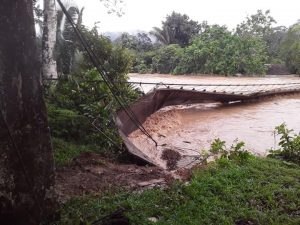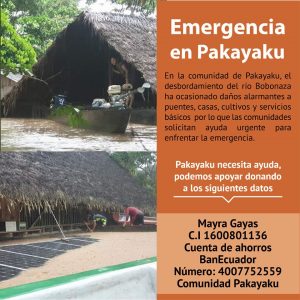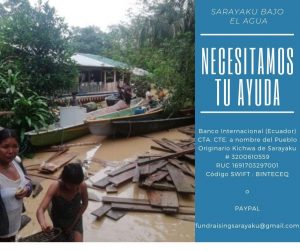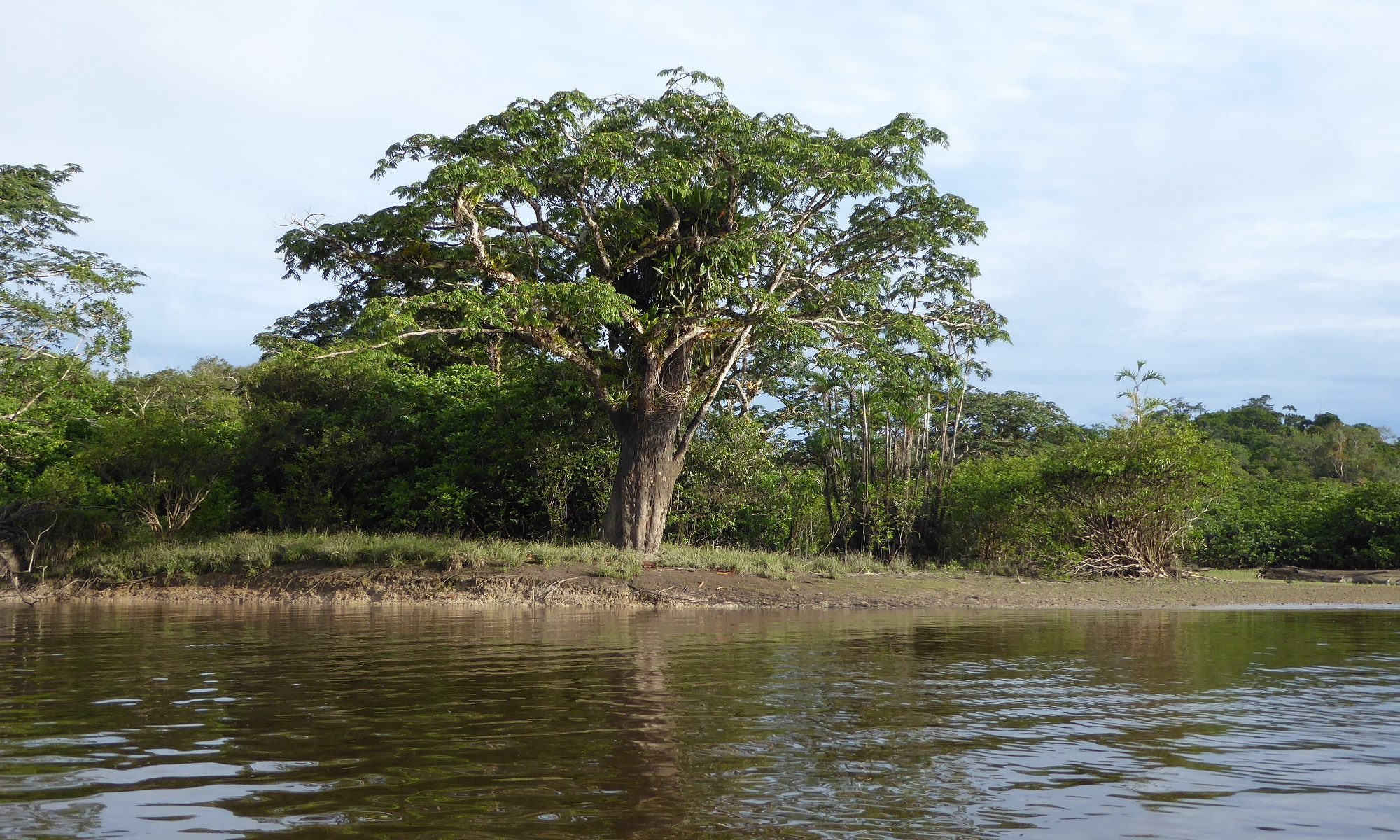Text: Tuija Veintie
[Haz clic aquí para version en Español]
Heavy rains increased discharge in the Bobonaza, Pastaza and Arajuno rivers in the Ecuadorian Amazonia, triggering flooding along the rivers. Affected communities include Jatun Molino, Teresa Mama, Chapeton, Montalvo, Wituk, Arajuno, and the most severely affected areas of Sarayaku and Pakayaku.

In the Indigenous Kichwa community of Sarayaku, river flows in the Bobonaza and its tributaries, Kali-Kali and Sarayakillu, rose rapidly on Tuesday, 17th of March, causing serious damage to infrastructure. The community of Sarayaku is in a state of emergency and reports that flooding has damaged people’s homes, schools, the community health center, as well as the main bridges and trails connecting different parts of the community. The airstrip, that connects the community to the nearest towns and hospitals, is shattered. In addition, flooding has damaged fresh water pipelines, crops and livestock. (Consejo de Gobierno de Sarayaku-Tayjasaruta, 18 March 2020).

Situation in the Kichwa community of Pakayaku, also by the Bobonaza river, is equally alarming. According to the confederation of the Indigenous nationalities of the Ecuadorian Amazonia (CONFENIAE), in Pakayaku, three bridges were wiped out, dozens of families lost their homes and crops, and the infrastructure that provides fresh water to the community suffered damage. (Comunicación CONFENIAE, 18 March 2020).
Our research team spent a couple of weeks in Sarayaku in 2019. While interviewing upper-secondary school students, we heard about heavy rains, muddy roads and floods that sometimes inhibited the students from attending school. Our colleague, Anders Sirén, has many years of experience of living and doing environmental research in Sarayaku. He states that in this area flooding has become more frequent than before: “It used to happen perhaps once per decade that the water rose to cover the alluvial plains along the river. But lately this has happened almost every year, sometimes even twice in the same year”. However, the floods are usually not as severe as this time. The intensity of the rain must have been extreme to cause such an increase in the river flow.
Based on environmental research, one of the effects of global warming is that intensity of precipitation is increasing in many areas, including western Amazonia. (NASA, 2010). This means that extremely heavy rains and related floods will be even more common as the global climate change advances. Moreover, logging in Amazonia increases the magnitude and frequency of floods. Anders Sirén reminds that floods also increase environmental pollution as the river flow carries away people’s belongings, which currently include lot of plastic and other non-degradable materials.
Floods threaten the environment, humans and the “good living” (Sumak kawsay). Right now, many people in communities of Pakayaku and Sarayaku lost their homes, food supplies and the community health center at a particularly difficult time, when everyone should stay home and maintain distance between each other to avoid spreading the coronavirus disease (COVID-19).
You can support people in these communities by donating through GoFundMe fundraiser organised by young Indigenous people from the affected region in collaboration with Amazonwatch, or with details below.


Sources:
Comunicación CONFENIAE (Confederación de Nacionalidades Indígenas de la Amazonía Ecuatoriana), 19 March 2020, https://www.facebook.com/comunicacionconfeniae.redacangau/
Consejo de Gobierno de Sarayaku-Tayjasaruta, 18 March 2020, http://ecuador.indymedia.org/?p=1724
NASA (2010). The Water Cycle and Climate Change. Earth Observatory. Accessed March 19, 2020, https://earthobservatory.nasa.gov/features/Water/page3.php

One Reply to “Flooding emergency in Indigenous communities by the Bobonaza river”
Comments are closed.